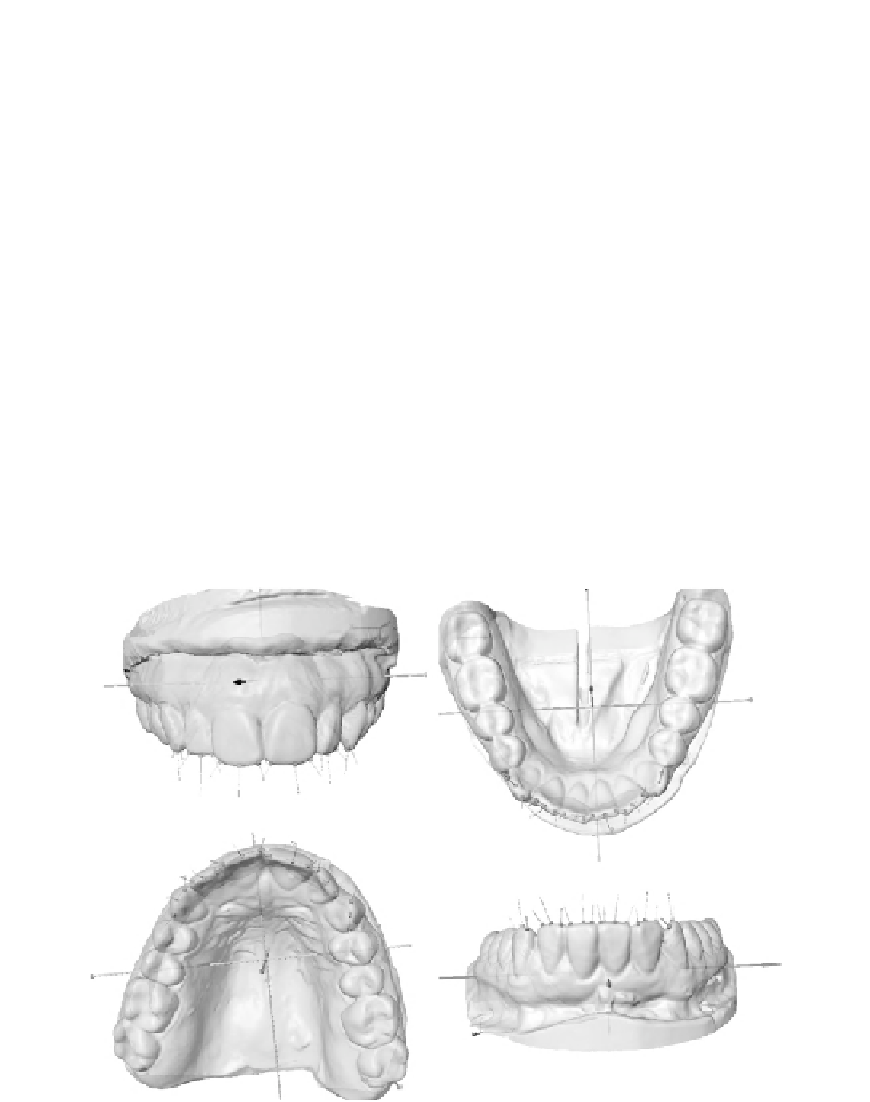Biology Reference
In-Depth Information
dental records that incorporate detailed information about the entire dentition are effective
and non-controversial but, in bitemark analysis, only the incisal surfaces of the six anterior
mandibular and maxillary teeth (the biting dentition) typically leave an impression. In
assessing the effectiveness of bitemark evidence, Sheets et al. (in press) examined the pat-
terns of both variation in the positions of the incisal surfaces of the six anterior teeth, and
covariation in tooth position using 1099 three-dimensional scans of human dentitions.
These dentitions were digitized by a commercial laboratory as part of the process of
constructing occlusal mouth guards for patients drawn from a random sample of these
private clinical patients in the USA (all identifying personal information was stripped
from the records used, and IRB approval was obtained for this study). One of the goals of
this study was simply to document systematically the patterns of variation and covariation
in this relatively large sample. This simple documentation of the patterns was a task spe-
cifically called for in the 2009 report on forensic sciences (NAS, 2009), and is helpful in
assessing the strength of evidence linking a suspect dentition to a bitemark, particularly
with the substantial distortion of the impression produced by skin (
Bush et al., 2011
). This
was a “sample of convenience”, and some care is warranted in attempting to extend these
results to various human subpopulations.
On each scanned three-dimensional dentition, ten semilandmarks were placed along
the incisal surface of each anterior tooth (
Figure 7.1
). The data were then analyzed using
both PCA (
Figures 7.2 and 7.3
) and PLS (
Figure 7.4
). The results of the PCA are shown as
paired views, both frontal and occlusal, because there is substantial interest in the degree
FIGURE 7.1
Occlusal and frontal views of three-dimensional scans of a cast made of a human dentition.
Semilandmarks were placed along the occlusal surfaces of the six anterior teeth in the maxilla and mandible.


